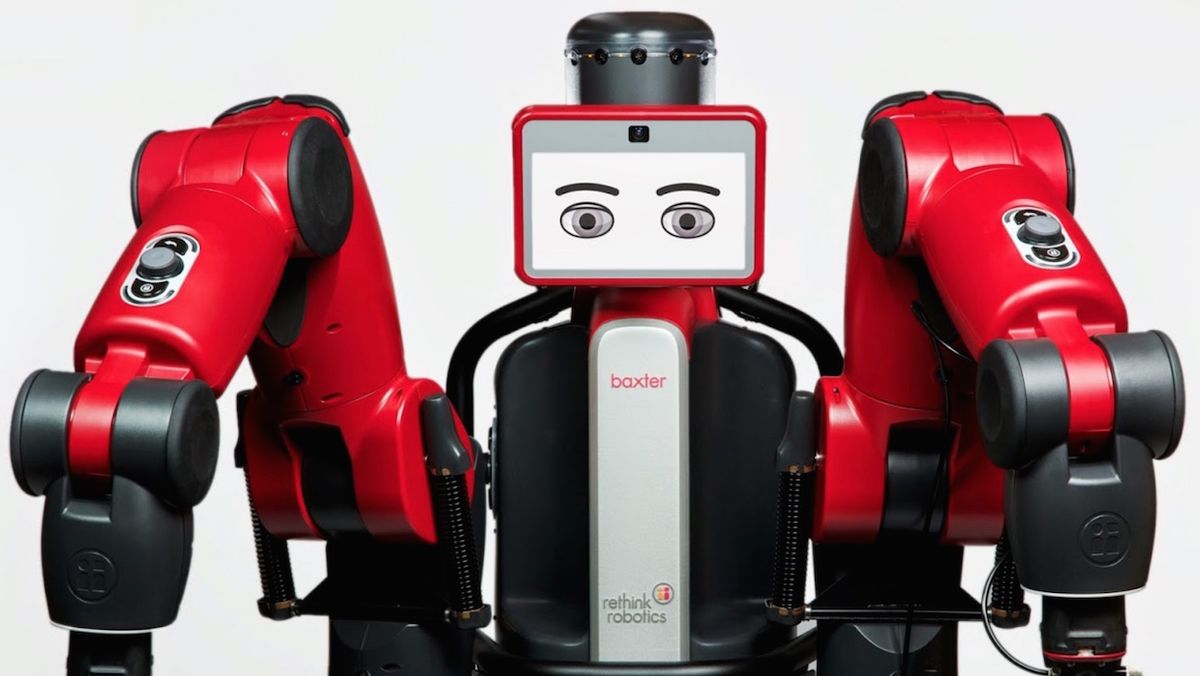Most robots spend a lot of their time not doing what we want them to do. After a little while, this ceases to be charming and quirky, and starts to get frustrating. The frustration is compounded by the fact that when a robot fails, it will either (best case) come to a halt and beep irritantingly or (worst case) explode or break stuff. Some robots (like Baxter from Rethink Robotics) have enough adaptability in their programming to be able to deal with minor issues that would otherwise confound most manufacturing robots, but there are still plenty of situations where robots need help. And rather than just failing, wouldn’t it be nice if they could preemptively ask for assistance?
Researchers at the University of Maryland led by Professor S.K. Gupta (a frequent contributor to this blog) have been teaching a Baxter robot to determine its own level of confidence in its ability to complete a given manufacturing task. If the robot’s level of confidence is low, rather than trying to complete the task and failing, it will instead call a human for help. The human can step in remotely, and through a simple interface, offer the robot a few tips to help it make sure of success. The tasks are relatively simple at this point, but the results could be extended to more complex operations in real-world settings.
We’ve said this before, but it’s worth saying again: designing and programming robots with reliable autonomy for 90, 95, or even 99 percent of tasks is certainly possible, but that last 10, 5, or 1 percent of tasks can be as hard to solve as everything that came before them all put together, and it may not even be realistic to try for 100 percent autonomy in many (if not most) contexts. Especially when you’re dealing with situations that undergo constant change, or embody continual uncertainty, it should be acceptable (for now) to occasionally just give up and let a human deal with whatever is going on. Autonomous vehicles do it (even the really good ones), and in a lot of ways, the environment of roads, including city streets, are even more structured than your average living room, since saying “your average living room” doesn’t mean much. This, incidentally, is why Roombas are so impressive: they manage to not freak out when they’re placed in the middle of a room with which they have zero prior knowledge and are expected to do a flawless vacuuming job.
Anyway, if we can accept for the short term that robots will occasionally need our help, and that it’s totally okay for them to do that, the next step is to figure out how to make it work, and there are a few different ways that a remote helping system like this could be run. One might be to crowdsource any issues, asking some sort of anonymous Mechanical Turk-type service to step in and help out for a small fee. Or, for a slightly larger fee, perhaps you could subscribe to a service where a trained human could log in and help your robot out when necessary. However, if you’re dealing with stuff in your home, you might not be comfortable with strangers nosing around, in which case it would make more sense for your robot to contact you directly. Through your mobile device, you could get pictures and video clips, with a dedicated app allowing you to tag things and answer simple, natural language queries. Like, “Does this piece of clothing go into the washing machine?”, “What’s the correct drawer for the spatula?”, “Should I water the plants?”, or “Would you like all humans destroyed?”
A home robot, of course, will likely be asking different questions than a manufacturing robot will, and moving beyond “help me locate/grasp/manipulate this object” is probably more futuristic than the current state of the art. What’s important in the short term is to adjust the expectations of the user: if we demand robots with 100 percent autonomy, we’re going to end up waiting a long time for very expensive robots that can only do a few things. But if we’re willing to help out a little bit ourselves, useful and versatile robots for both manufacturing and the home could show up a little sooner.
[ UMD Robotics ] and [ Pursuit of Unorthodox Ideas ]
Evan Ackerman is a senior editor at IEEE Spectrum. Since 2007, he has written over 6,000 articles on robotics and technology. He has a degree in Martian geology and is excellent at playing bagpipes.



